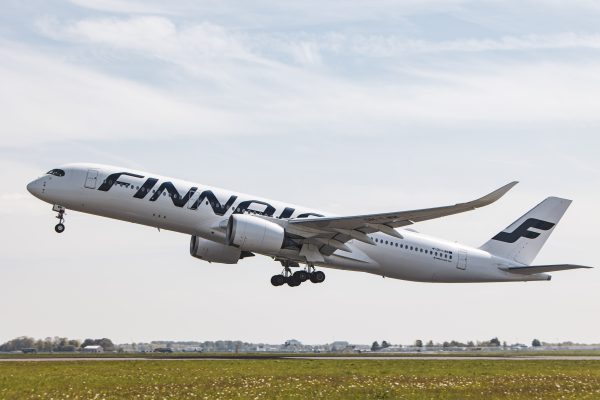US-EU goods trade in 2023 reached $946 billion, 39% higher than the $575 billion US-China goods trade and 15% higher than the $805 billion EU-China goods trade
What’s more, trade between countries does not just consist of trade in goods. It also includes trade in services. US-EU services trade totaled $411 billion in 2022, the last year of available data. That was about six times greater than the US-China services trade of $68 billion and 3.6 times greater than the EU-China services trade of $122 billion. Putting goods and services together, EU-US trade totaled $1.3 trillion in 2022. EU-China trade of $1.06 trillion was only about 82% as large, and US-China trade of $758.4 billion was only 58% as large.
And yet pundits and politicians continue to proclaim otherwise. It is mystifying, for instance, why German officials and business leaders regularly state that China is Germany’s top trading partner when China-Germany trade in goods and services of $348.45 billion was about 12% less than US-Germany trade of $394.15 billion in 2022. Both US-China trade and EU-China trade weakened in 2023, while EU-US trade strengthened.
The discrepancies become even greater when one looks at investment. US investment stock in the EU in 2022 ($2.7 trillion) was more than 21 times more than US Foreign Direct Investment stock in China ($126.1 billion). EU investment stock in the United States in 2022 ($2 trillion) was double the level of comparable investment from all of Asia ($1 trillion).
These figures do not include US commercial ties with the United Kingdom, which is America’s #1 commercial partner among all foreign countries. Although US-UK goods trade is much smaller than US goods trade with China or Mexico, services trade is greater than US services trade with China and Mexico combined — nearly $156 billion in 2022, the last year of available data, versus US-Mexico services trade of $76 billion and US-China services trade of about $68 billion. At $1.74 trillion, US-UK investment stock is over 11 times greater than US-China investment stock ($154.8 billion) and over 10 times greater than US-Mexico investment stock ($164.1 billion). US Foreign Direct Investment in the UK alone is greater than US FDI in the entire Asia-Pacific region.
That’s not all. The US has become the EU’s main supplier of liquified natural gas and its largest petroleum supplier. The EU, in turn, is a major source of investment in the US energy sector.
Transatlantic digital flows carry 75% of global digital content. Research and development flows are the most intense between any two international partners.
More than 16 million Americans and Europeans are directly employed in the transatlantic economy. That number is likely to be substantially higher if one includes jobs due to trade and knock-on employment effects for suppliers and distributors on each side of the Atlantic.
Given that the US and Europe have stronger commercial and innovation ties with each other than with Asia, share more values, and together constitute the strongest alliance in the history of the world, it would seem that the transatlantic partners would be better positioned than Beijing as the world’s three largest commercial powers each engage in a competitive process of de-risking. Each seeks to protect its economy from critical dependencies. Each seeks to promote its industrial capabilities, often with substantial subsidies. And each is partnering with others to amplify its influence.
But so far, the de-risking playbooks in Washington, Brussels, and London have been less effective than they could be in part because Western capitals have been unwilling or unable to harness their full combined potential. While the transatlantic partners are closer today in their assessments of the China challenge than they were three years ago, they approach China from different positions and with a different sense of urgency.
Priorities are often mismatched. Their relations are beset by competitive impulses, underlying questions of trust, and mutual doubts about relative commitment and capacity. Simmering bilateral disputes over subsidies, tariffs, and digital rules have been shelved but not resolved. The two parties differ when it comes to the continued relevance of the World Trade Organization. They have been unable to align their export controls and investment screening efforts, and the US-EU Trade and Technology Council, while useful, has struggled to meet its promise.
Despite the tumult of recent years, the transatlantic economy remains robust and resilient. It offers Washington and European capitals a solid geoeconomic base from which each can more effectively redefine the terms of their interdependencies with Beijing – if they can prove themselves able, finally, to forge a truly strategic US-EU partnership that can match and enhance the military alliance they have forged through NATO.
Daniel S. Hamilton is President of the Transatlantic Leadership Network, a Senior non-resident Fellow at the Brookings Institution, and a Senior Fellow at the Foreign Policy Institute of Johns Hopkins University SAIS. He co-chairs CEPA’s Technology, Trade, & Security (TTS) Dialogue and is the author, with Joe Quinlan, of The Transatlantic Economy 2024.
Maria Hadjicosta, an Intern for the Digital Innovation Initiative, contributed research.
Bandwidth is CEPA’s online journal dedicated to advancing transatlantic cooperation on tech policy. All opinions are those of the author and do not necessarily represent the position or views of the institutions they represent or the Center for European Policy Analysis.





